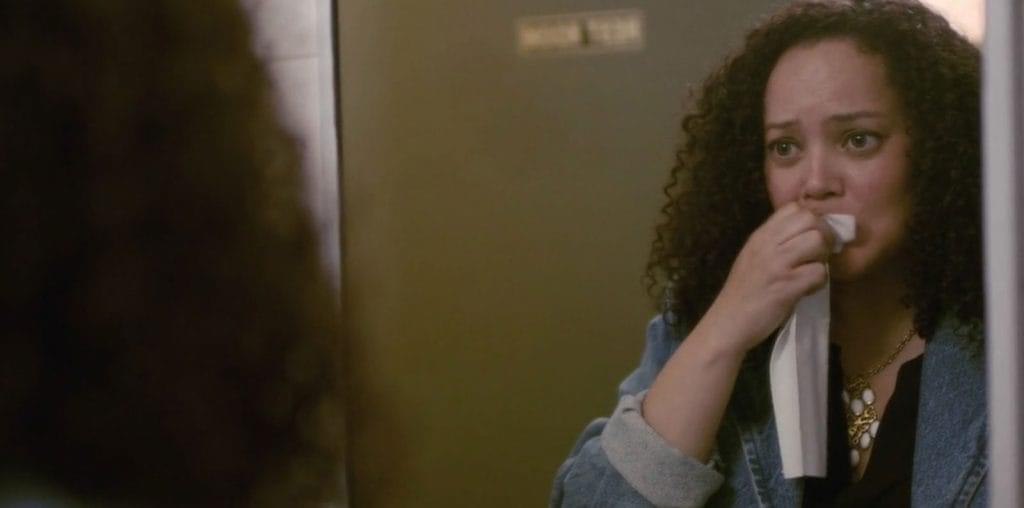
I don’t read a lot of books (get your whips out), but I did spend Memorial Day weekend (how appropriate, in afterthought) this year emotionally drained as I slogged through the Pulitzer Prize-winning novel The Road by Cormac McCarthy (No Country for Old Men). This novel is a bleak appraisal of planet that has succumbed to an unknown cosmic cataclysm. Ten years on, all that’s left of humanity are a father and son fleeing in America’s Mid-Atlantic region (and by extension, the entire world) filled with cannibals and other rug-rat remnants of society. John Hillcoat, whose hellish Western “The Proposition,” an Australian-British production barely seen by American audiences when released here in 2006, was mentioned by Roger Ebert in his review as bearing a visual sense of dread and story akin to MacCarthy’s book, Blood Meridian. Other friends who saw Hillcoat’s earlier film suggest he was the obvious choice to adapt “The Road,” a misery-filled book comprised of short, spotty segments which I thought could never make a filmable product. (That’s why I’m not a producer.)
Instead, Hillcoat gathered many of the technical staff from his previous film, including Nick Cave and Warren Ellis (music), editor Jon Gregory, production designer Chris Kennedy, and Margot Wilson (costumes), and, with to-date unproven screenwriter Joe Penhall (a playwright whose “Blue/Orrange” won an Olivier Award and Critics Circle Award for Best Play), fashioned one of the best adaptations I recall since Frank Darabont tackled Stephen King’s “The Shawshank Redemption” and “The Green Mile.” Very little has been changed from the novel, and the dismal end of civilization has been filmed as a raw, almost black-and-white, horror film. The zombies, however, are still living, barely, masquerading as marauders scavenging the barren countryside devoid of animal life in search for their latest “meal.”
Into this bleak, ashen post-apocalyptic landscape of collapsing trees falls a man embodied by the fully bearded Viggo Mortensen (“Eastern Promises,” “The Lord of the Rings” trilogy, “A History of Violence”), whose rail-thin body reminds me of Christian Bale in “The Machinist,” with an few extra layers of grime. Mortensen’s character is accompanied by his son in a dash to the sea in the probably misguided belief that there will be blue skies at the end of that road. The child is played by Kodi Smit-McPhee, who earned kudos for his performance in “Romulus, My Father,” a coming-of-age story of a young son of estranged European parents who have emigrated to Australia in the mid-20th century. Both performances are among the strongest you will see this year.
Although technically co-starring several prominent actors, including Charlize Theron, Robert Duvall, and Guy Pearce (who starred in Hillcoat’s “The Proposition”), they barely have enough screen time to register as supporting roles. This is not to begrudge them their small, but powerful, performances, but the film, as was the book, is mainly a two-character journey over a scorched, grimy countryside. The stoicly starving man, constantly tormented by dreams (which provide a break with intermittent glimpses of a more enlightened, colorful past) and the wistful, obedient child search for any orts to soothe their malnourished souls and shivering spirits, while hiding from the “bad” people whose religion is ghastly cannibalistic. Their meager ark is a decrepit shopping cart filled with muddy blankets and morsels they share amongst themselves and rarely with strangers. Their only defense is a gun with two bullets, and its debatable which way either of them would point the weapon — inward or outward — should they confront the enemy.
“The Road” is not for the weak of heart. The film’s eternally dark skies, numerous skeletons (not all dead), droning soundtrack, wide screen fire storms, rumbling countryside, and rusting infrastructure make for an overwhelming sense of dread. Its gut-wrenching, cold pessimism is only broken by the occasional discovery of some food, a bath, a can of warm soda. Yet, it is compellingly enervating and a marvel in the filmmaking process. It’s a grueling experience that still allows for the viewer to survive with a self-centering hope. That hope, however bleak in a world of war, inconsideration, starvation, over-consumption, and greed, allows that we may yet stumble back from the abyss, away from the savage side of ourselves. This is no Disney amusement ride.

